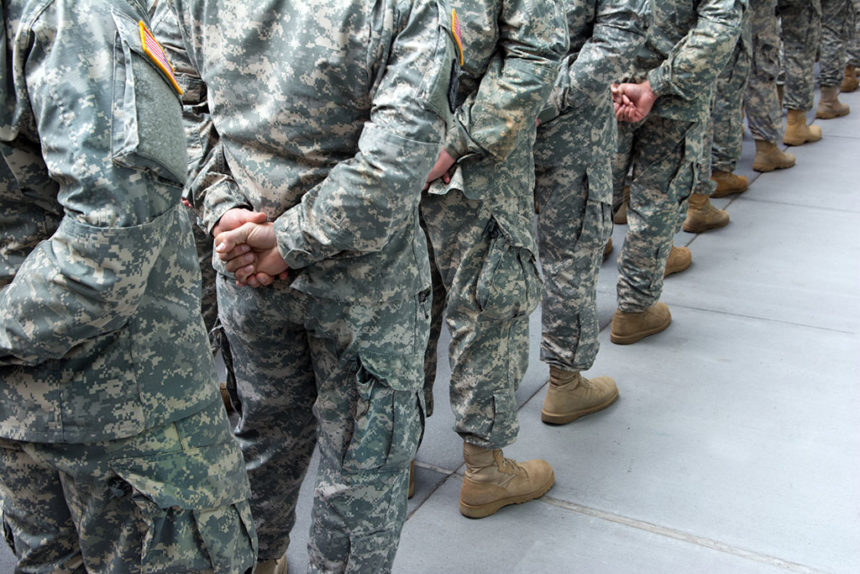While the U.S. continues to navigate a complicated mental health crisis, there is hope for those who have served in the military.
The Department of Veterans Affairs (VA) announced Tuesday that veterans who struggle with suicidal ideation or crisis will now be able to go to the emergency room and receive care free of charge.
As part of the policy change, the VA will deliver and pay for emergency care for veterans in an acute suicidal crisis — both at VA facilities and private facilities. That includes transportation costs as well.
The VA will also provide 30 days of free inpatient care and up to 90 days of outpatient care after emergency suicide treatment.
“We want all veterans and former service members to know they can get the free, world-class emergency suicide care they need, when they need it, no matter where they are,” Dr. Cliff Smith, director of analytics, innovation, and collaboration at the Veterans Health Administration, said in a statement.
The measure is a powerful move by the federal agency in an attempt to tackle the significantly high levels of suicide among U.S. veterans. In recent years, suicide rates among veterans have skyrocketed, prompting the VA to list suicide prevention as its number one clinical priority.
According to the VA’s most recent veteran suicide prevention report, the unadjusted rate of suicide among U.S. veterans in 2020 was 31.7 per 100,000 people. That year, more than 6,100 veterans died by suicide, an average of nearly 17 suicide deaths per day.
Still, the move is a fairly unique one for the VA, according to David Rudd, a distinguished professor of psychology at the University of Memphis.
“It’s a really important first step,” he noted, pointing to a current lack of access to care in urgent or emergency circumstances for veterans.
“A big challenge for the VA has been being able to respond in a meaningful timeframe to veterans that are in crisis; particularly veterans that are experiencing a suicidal crisis,” Rudd said. “This is evidence of an implied acknowledgment that the mental health challenge is pretty significant in that it requires partnering with private entities to effectively tackle.”
However, despite its noble intentions, the measure only scratches the surface of the issue. Though the suicide prevention report showed that suicides among veterans dropped between 2020 and 2019, the number is still incredibly high.
Part of the lingering problem lies in actually treating veterans once they arrive at the emergency room. Previous instances of delays in care led to fatal results.
In 2020, a doctor at a VA medical center dismissed a patient who came in seeking psychiatric treatment and that patient died by suicide several days later. One year later, another patient in a separate VA medical center died by suicide in the emergency room after staff neglected to keep a watchful eye.
Overall, Rudd said he expects that the free-of-charge emergency care measure — while a solid step forward — may ultimately unveil even more challenges for the VA to fix in coming years.
For example, general healthcare providers are not often primed on the psychological and psychiatric traumas that veterans face.
“There are unique issues that veterans face, particularly those who have seen combat and served for long periods of time,” Rudd pointed out. “It’s important for clinicians and providers to be familiar with veteran experiences and context. That’s one of the challenges that’s going to surface for the VA very quickly.”
This change may also shed more light on the problems plaguing mental health care across the country. This includes severe provider shortages, rising rates of mental illness and an increased demand for care that has proliferated since the pandemic.
“The reality is that it’s going to reveal the significant inadequacies in the management of suicidality in the general health care system,” Rudd said. “If you go into an emergency room today, just as a member of the general population, you’re going to have trouble with several things like getting an adequate evaluation, best practice care and finally getting long-term care. Oftentimes, people have long-term problems that require more than 90 days of care.”
If there’s one action the VA can take immediately, the agency can provide transparent communication to patients and providers alike.
“There’s going to be an enormous number of challenges around the issues referenced,” Rudd continued. “Hopefully, the VA will be transparent in acknowledging those challenges and then respond by making sure people are appropriately trained and best practices are used.”







